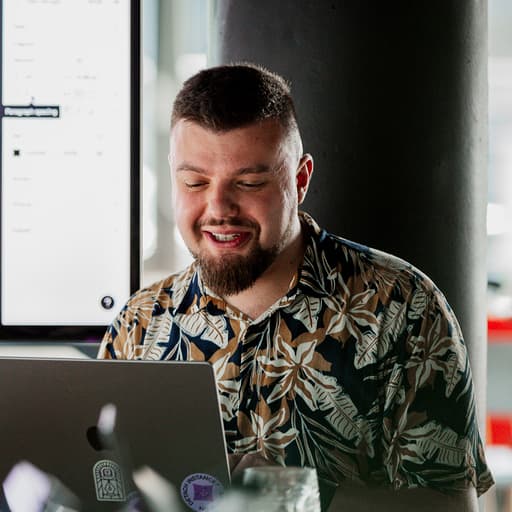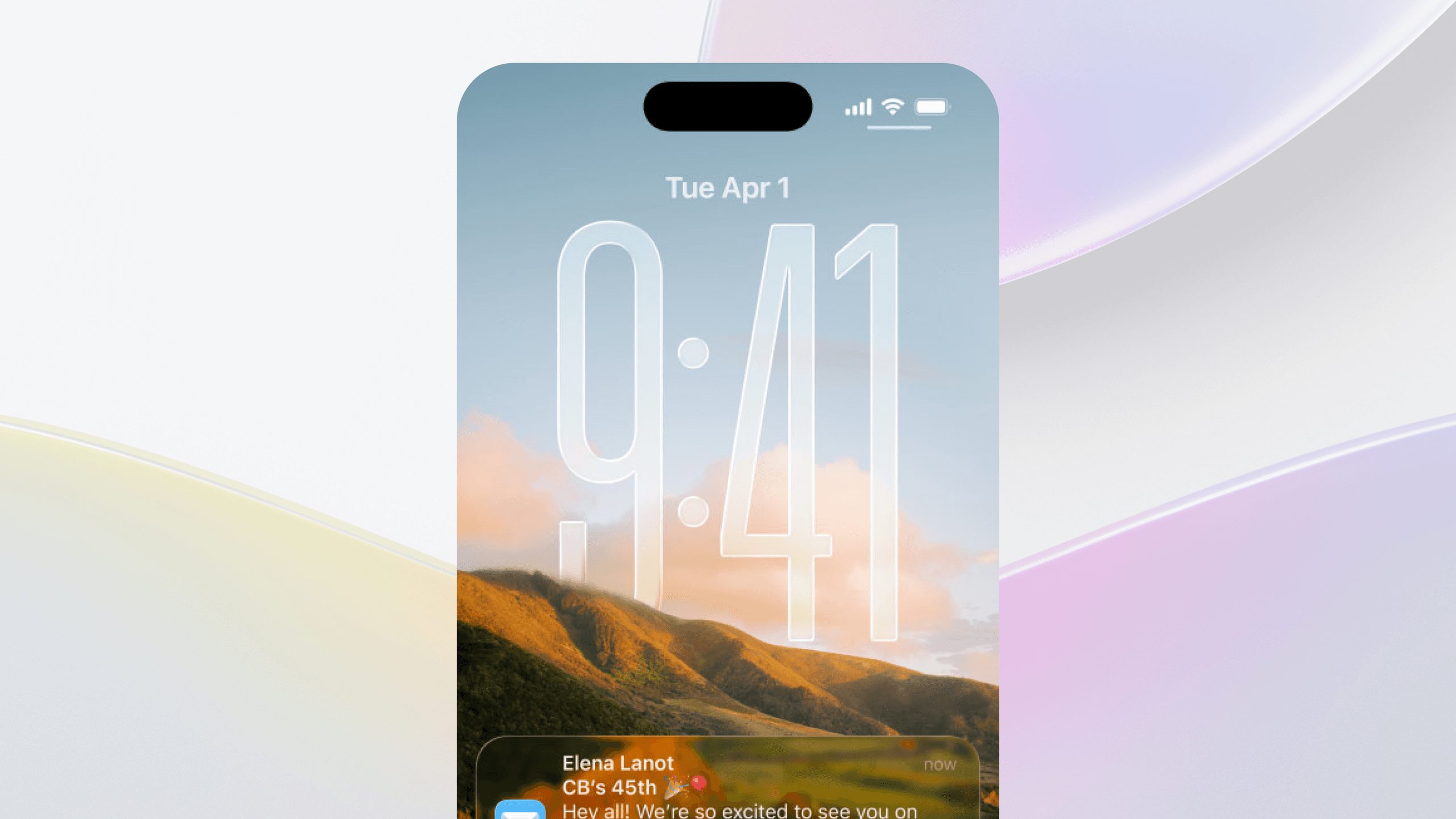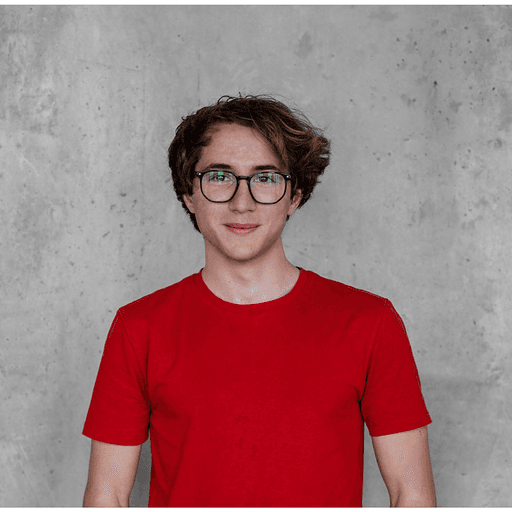Thomas is the Founder and CEO of GRIND, an interactive sports platform that offers a portable basketball shooting machine. They have a lot going on today — like implementing game-based content and pro-training workouts.
But you can (and should!) read about all that on your own time. For our Straight Up interview, we focused less on the outcomes, more on the journey, lessons and mistakes.
How did an 18-year-old from the inner city of Houston design and weld his own prototype? What is a must-have for the “perfect pitch” when facing renowned investors? And how did the Techstars incubator and RED Labs tech accelerator change his story?
Thank You to Thomas for this honest chat about the ups and downs of the past years.
As an elite basketball player, you tore your ACL four times before graduating from high school. Yet you not only found the energy to get better but even created a whole new challenge for yourself: Creating a product. What’s the mindset that drove you?
I was focused on the future of my career as a basketball player, and having to come to a complete emergency stop was pretty crazy. You have all that energy going towards these goals, and it just halts — that's a lot of energy pent up. I had to shift that energy towards something.
After the first injury, I went harder, working out, waking up at five o'clock in the morning. But after the third and fourth surgery, I started to realize that I couldn't play a game full throttle. I had to start shifting that focus towards something else that was going to help me and my family be in a better place. Business was that second lane for me. The mindset was that when you hit a brick wall — for me, that was basketball — that athlete’s energy is still there.
It’s a mindset of focusing every day on what you love to do, whether it's playing soccer, basketball, business, whatever it is. That real energy is where the name GRIND came from and why I feel like people relate to it so much. It's authentic.
Your product is portable and affordable, two things that competitors don’t have. As a kid who’d never built a product, what drove you to think, ‘I can do it better.’
It really got under my skin that there was nothing designed for athletes. Seeing that problem and trying to solve it overshadowed my inability to weld or manufacture something. I knew this has to exist. So, what do I have to do to make sure it exists?
I was like 18–19 at the time, and I had a real problem with the current competitors. My school had bought one of these shooting machines that have been around for 30, 40 years. $10,000, 400 pounds. It started making me mad because I never had access to it. It was always locked in the storage room, there's no way my parents are buying a $10,000 machine… It was unattainable, but I felt like it was the doorway towards me reaching my goals.
How do you even start with not just drawing the first designs, but creating and welding a prototype?
Affordability was number one. But I wanted it to represent success, quality — like Nike. If Nike were to recreate the shooting machine, how would they do it? I thought it'd be super cool if it was in a Nike duffel bag. I’d be walking up to the court, people would have no idea, they’d look away, look back and the machine’s up. So I literally drew a duffel bag. And then we need a net, the passing mechanism, legs… but it all started with the duffel bag concept.
I didn't have a lot of resources, no friends going to Harvard or MIT, but one of my best friends went to welding school. So I just said, “Xavier, I need your help. I have these drawings...”
I bought a welding machine for 50 bucks, he’d come over and weld, and I would just ask a lot of questions and learn. And when he couldn't come over, I’d start welding. Eventually, I could weld on my own. We learned how to 3D print and laser cut, I started figuring out how to manufacture it… Took a long time but we figured it out.
When you’re completely new to entrepreneurship, how are you able to find a team of people to help realize your vision?
That's one of the hardest things, especially starting young. A lot of founders go to college, meet great people, go to work for their first job, second job, meet more people — and they end up with this Rolodex of individuals to call on to build an all-star team. But for me, I was 18, working at the YMCA.
My two first co-founders were Xavier's friends. Valedictorians of their class, really smart mechanical engineers that went to the University of Texas. They helped me develop the first prototypes, are a lot smarter than me as engineers and I've learned from them. Then I brought on interns from Rice University, again way smarter people than me.
I started pitching with this team full of interns, but we were making the product, making progress. I don't recommend anybody doing it that way but, when you're 18 and have no resources, you just got to figure it out. And that's kind of what I did. My team has changed over time. I probably could have done things faster and smarter, but we always survived to live another day. That's what matters in the startup world.
And actually, I eventually hired my boss from the YMCA as our Head of Customer Success — he was a great guy back in the day, always brought us doughnuts. I thought, “I need that guy. One day.” And I got him.
The first three years of GRIND Interactive weren’t always easy. Can you talk about this earlier journey a bit and what kept you going?
It’s all about the people, at the end of the day. We launched in 2020, obviously hard times because COVID hit two weeks after we launched. But there's always something to do in a startup; issues happen, but you have more people around to help figure it out. You get through it, and it's on to the next issue or the next problem.
I went from interns to getting really high-caliber individuals on the team, like Brian [Blum], our Head of Growth/COO now — we used to play basketball back in the day, but he got a job at the San Antonio Spurs. I would see these people coming on that were way smarter than me, everybody would come on really excited, pushing things forward, and we would get traction. That kept us going.
Your first real exposure to tech- and business-minded people came with the University of Houston's startup and tech accelerator RED Labs. What was that experience like?
RED Labs is the OG. I owe a lot to them because as a 19, 20-year-old, I hadn’t even gone to college at that point. RED Labs gave us a lot of resources, introduced us to investors, put the business model canvas into action that made me go out and talk to 200 customers. They made us interview kids, coaches and trainers and I actually got my first pitch. I think we pitched to like 400–500 people in the audience.
We were able to show GRIND off within Houston, which helped me get introduced to the next accelerator, meet the next investors — the first investors that we got — and helped us launch. They're always trying to help, so I owe a lot to them.
Can you share a bit about joining the Techstars incubator in 2021? At this point, you weren’t new to this anymore. But was there still something that taught you a lesson?
I actually applied to Techstars in 2017 (didn't get in) but it was around the same time I got into RED Labs. I've always wanted to get into YC or Techstars, so it almost felt like we were late — but that’s how it always feels.
Techstars Sports Accelerator introduced us to a lot of sports and technology investors. We went in with about $1 million in revenue already, Shark Tank had already happened. A lot of stuff was rolling. And we realized it was time for GRIND to start focusing on the software.
We got our first VC investors out of there and they taught us a lot about becoming a real high-growth company. It's a different world of raising capital. You're out there trying to raise $10 million. What does that even look like? What do you need to have ready?
You become a better entrepreneur and a stronger team, learning about running the process of raising capital as a CEO, making sure you're stacking your meetings, tons of little details. Things like the good, the bad and the ugly of exiting a company.
Speaking of — what does the process of getting on Shark Tank look like? Are there any steps that others can take to get on the show?
Apply, tell your story and see what happens. And get the pitch ready. If you don't have your shit together, you're gonna get beat up. So practice the pitch. Really write it out and make time for all the numbers and all that good stuff.
I had a very odd introduction to Shark Tank. My fiance at the time (we're married now) actually applied for me behind my back. We were in the middle of launching and she was like, “Hey, check your email right now.” She’d applied about a year ago and they reached back out.
The first call was with a producer from Shark Tank, then they had us go through five, six interviews, a whole bunch of paperwork, and they were like, “Alright, you made it. We're gonna fly you out to Las Vegas, you're gonna pitch, and you have to be in quarantine for two weeks.”
How did you prepare your product pitch? Is there anything to know when pitching to the Sharks?
I went back to other pitches I'd done in the past, wrote it all out, recorded myself… just listening and practicing on the porch. Then, during the two-week quarantine, I had all my windows written on and I just tried to memorize the pitch as much as possible.
On Shark Tank, if you're confident and you control the room, you'll be great. Don't worry about anything else. You can mess up, they're not gonna chastise you — as long as you're smiling and energetic. But if you go in there timid, scared, not very into it, they're going to see that as, “We're billionaires, this is national television, and you're not bringing the energy.” And that’s where they start haggling.
How would you define the perfect pitch in general? Can it even be generalized?
The perfect pitch is telling a great story while getting your product and your company across. People follow and remember stories. But it’s different for every pitch; you have to really understand who you're pitching to.
On Shark Tank, you know they're going to ask questions. In the first two minutes, I didn't have to tell them that I started the company at 18 in the garage. I just had to make sure that they knew what we did, what the product is and which problem we solve. Shark Tank is designed to start pulling some of the stories out of you. But 100% a part of the pitch was having that story scripted — as soon as they ask this question, I'm dipping into this bag. I’d already brainstormed what Mr. Wonderful or Mark Cuban will ask. But it's not like that everywhere.
Sometimes, you have to put that story in the front, or in the back, wherever you see fit — but there has to be a story told.
Your journey’s been pretty long and convoluted. How do you cope with stress or anxiety?
Music. My parents wanted me to be a musician, I played violin when I was younger. My dad was a hip hop producer and when I was little, we would have all these Houston rappers come over to our small house with two bedrooms. He had the studio here and sometimes I'd fall asleep in the studio, lab music everywhere and I’m just knocked out.
Houston rap was synonymous with slowing down the music. DJ Screw is one of my favorite musicians and almost every night, I listen to screwed music — slowed down, slow jams — or just old rap songs. I love the creativity that he brought to that world of music. That's how I cope with anxiety and stress. I just turn on some music, jam out and forget about everything.
Through all of this, can you share a mistake you made under the impression that it was the right move?
I'm a firm believer that things happen for a reason, so I feel like maybe those wrong decisions turned into the right decisions. Who knows, right?
The first was trying to raise money without a process. Not being very knowledgeable on how to fundraise. Because I was pretty unsuccessful for the first two, three years of existence. I’d never raised money, I didn't know how to run a process properly, I didn't have contacts. It was one of the things that I thought I was doing right, that I was 100% doing wrong.
The next one was launching the product a little too early, or not understanding the manufacturing process. Launching a physical product is very different — you don't get a lot of feedback on how to launch and push out physical things. We had customers waiting for late deliveries, some machines showed up broken (we’d assumed the shipping company was going to take good care of them). There are a lot of hard lessons that we've learned with hardware.
But you never know. It’s one of those things… We got to get it out there and maybe if we hadn’t launched, we’d never get on Shark Tank, or Techstars, or Forbes 30 Under 30.





